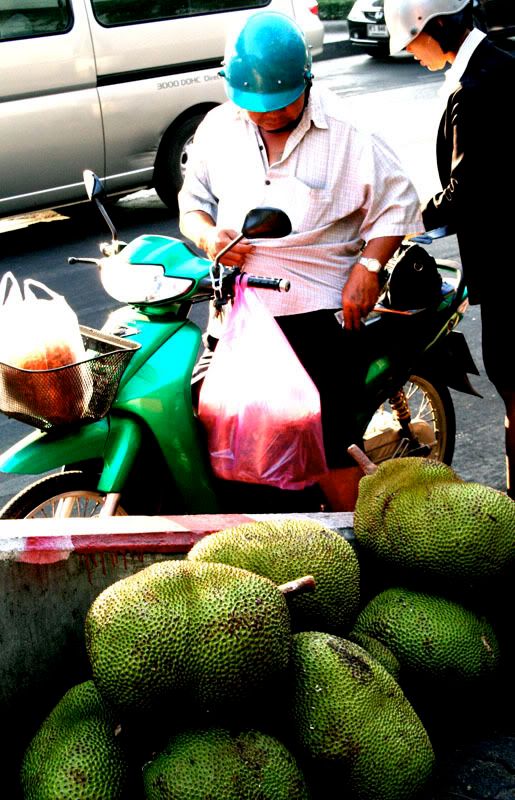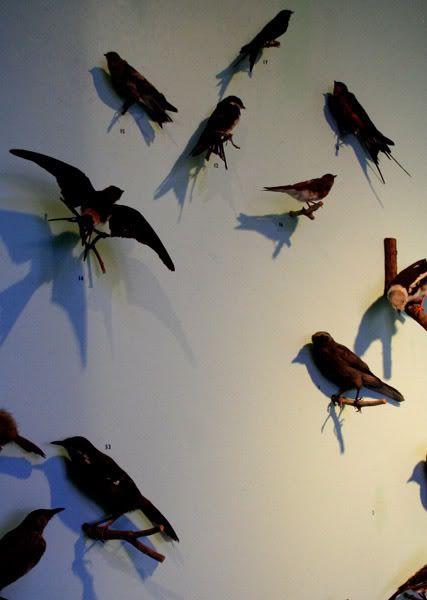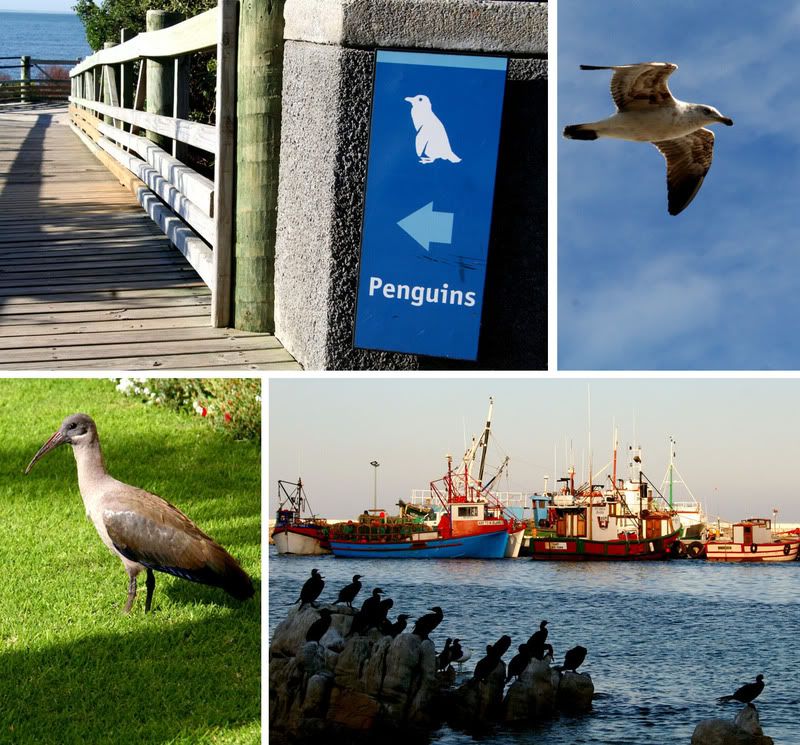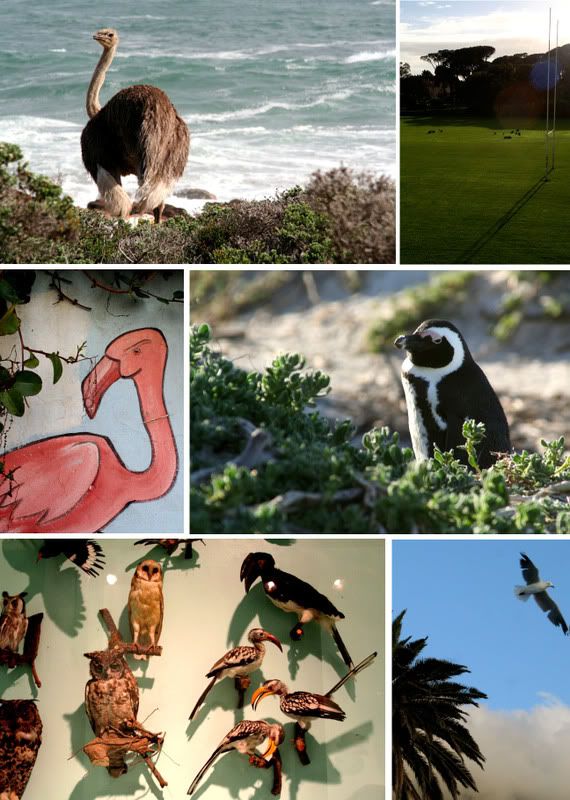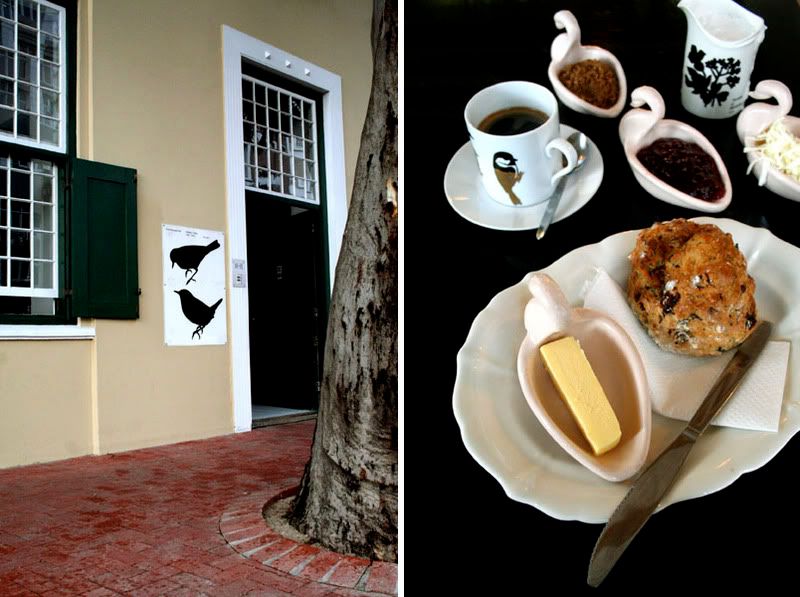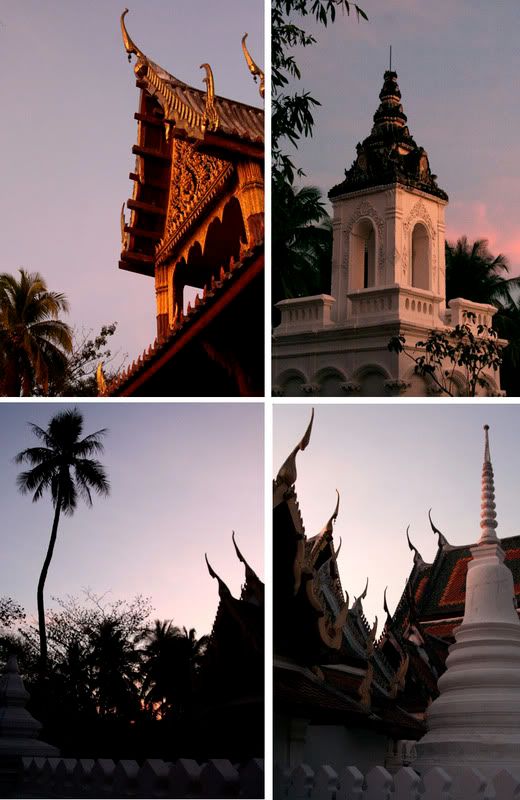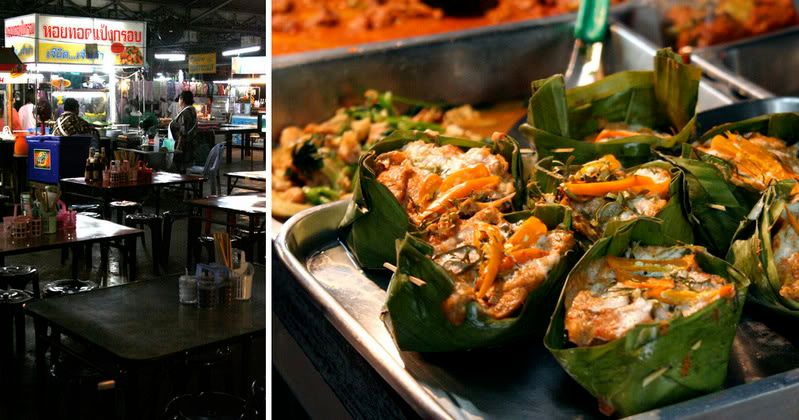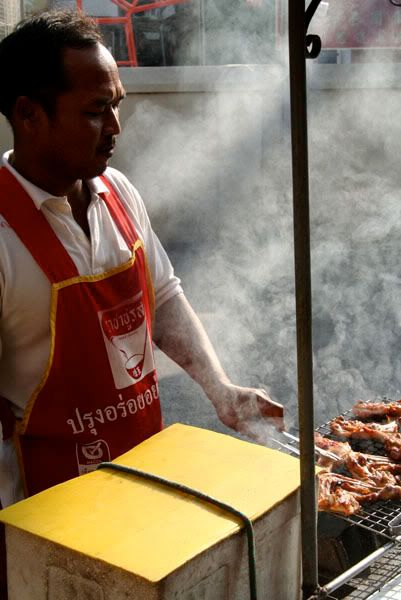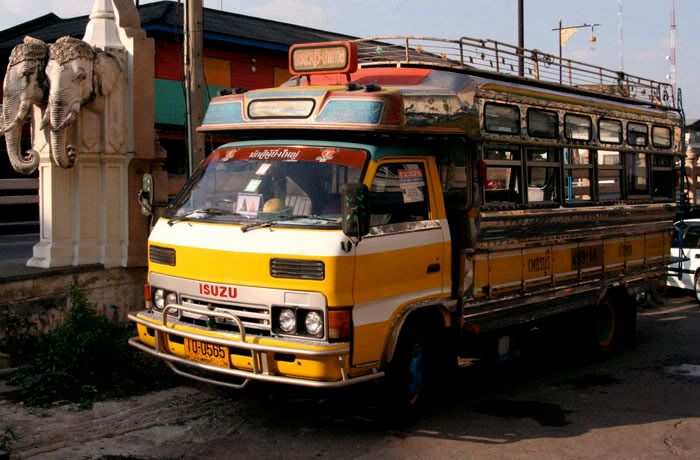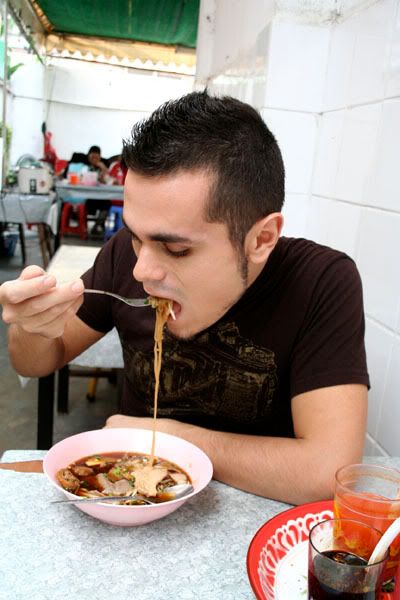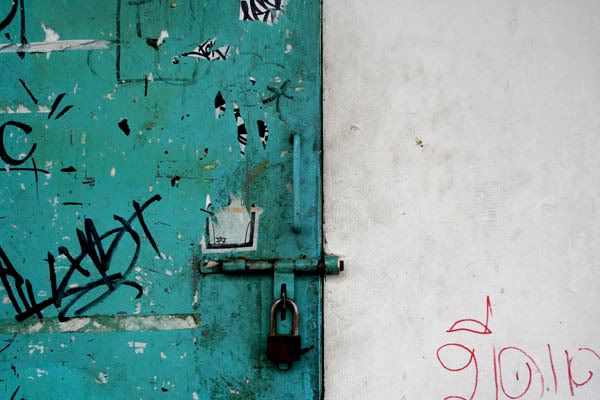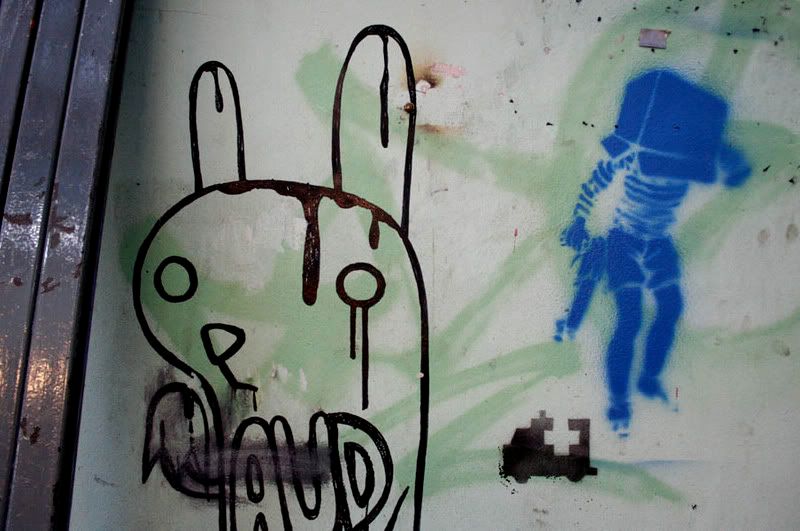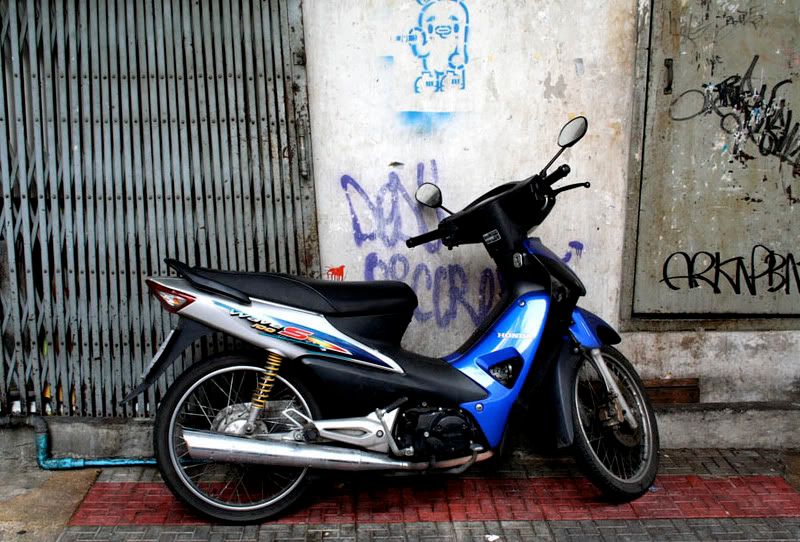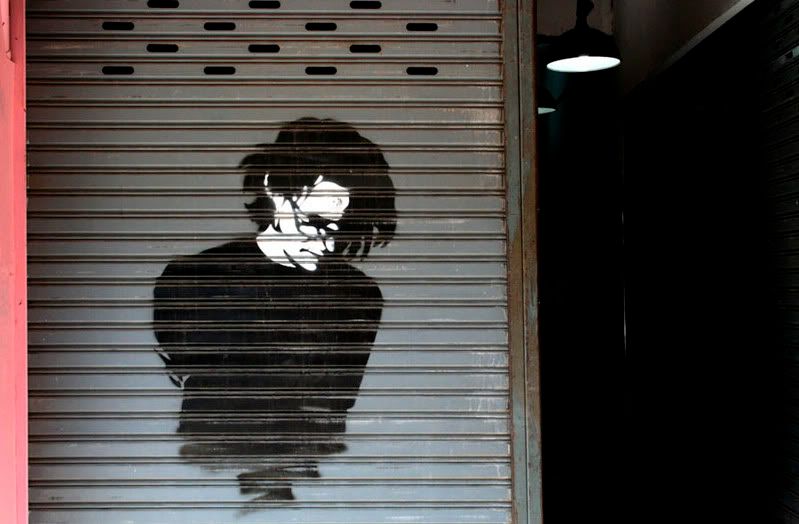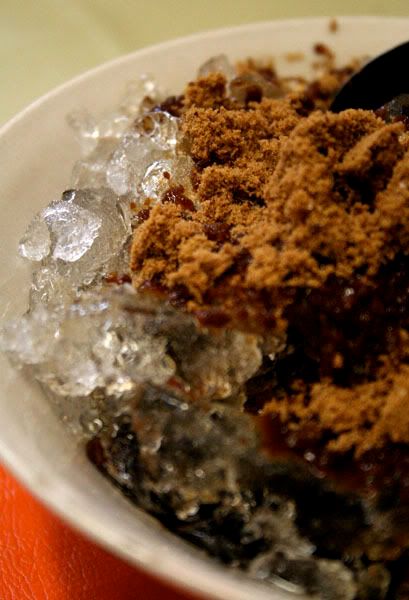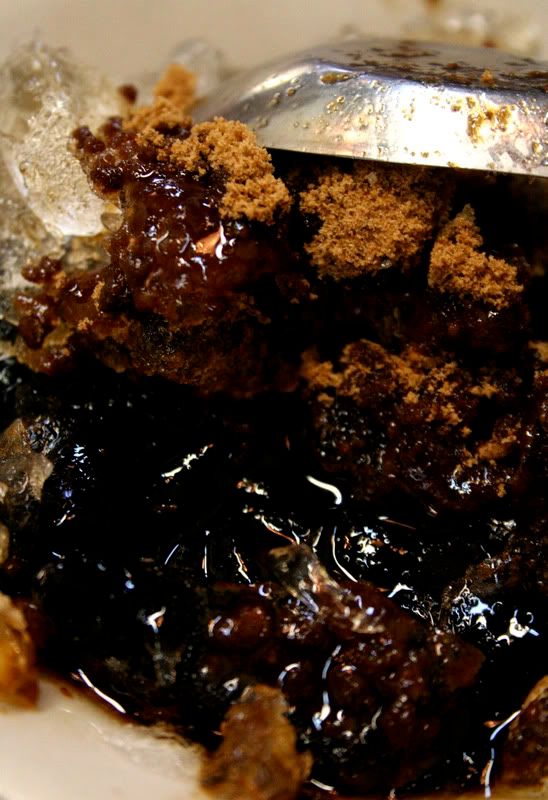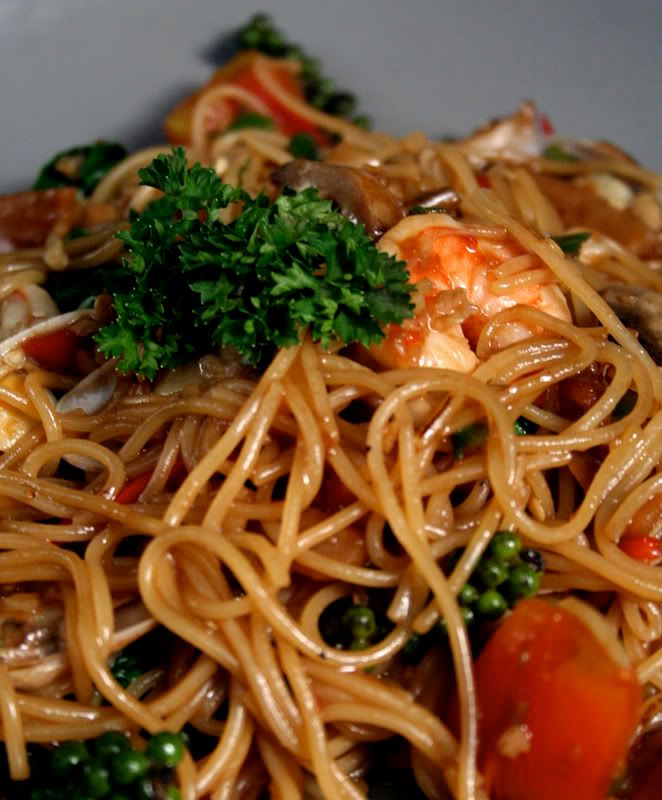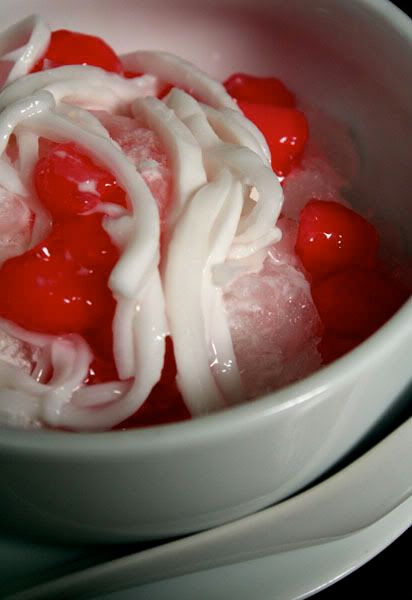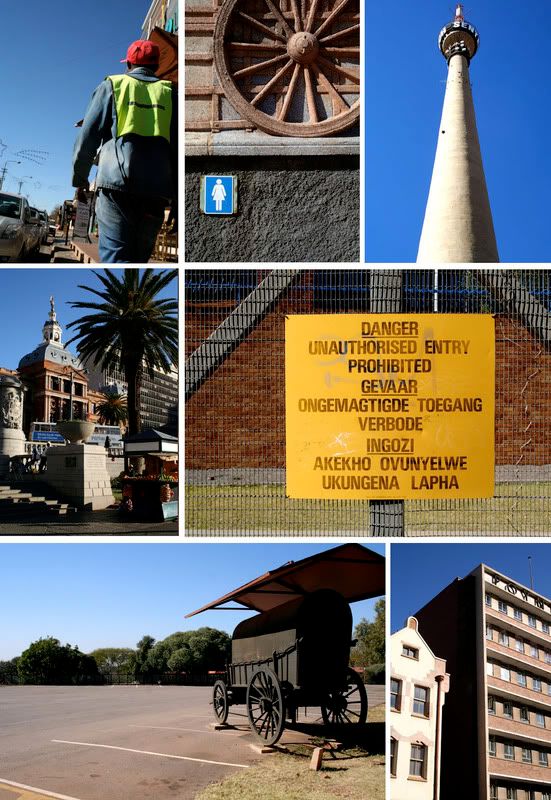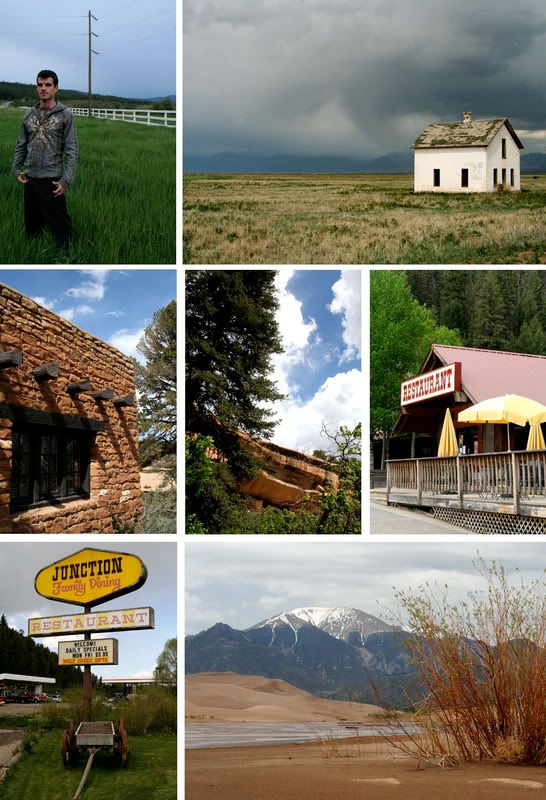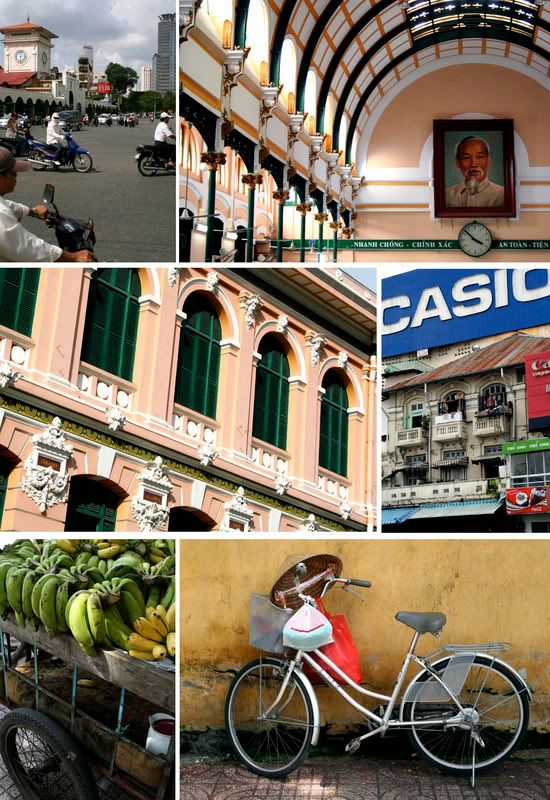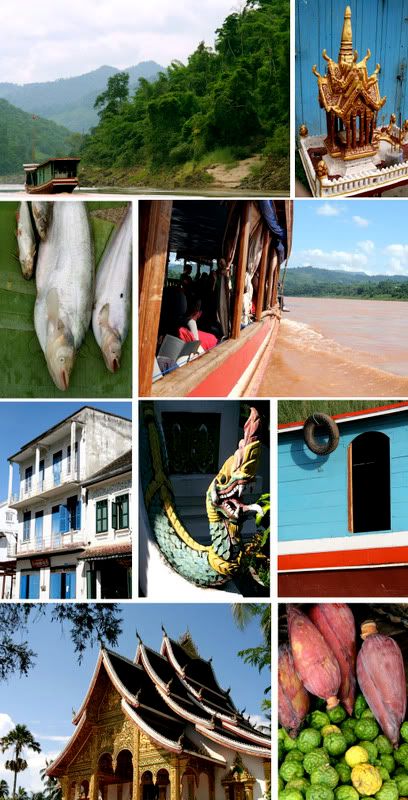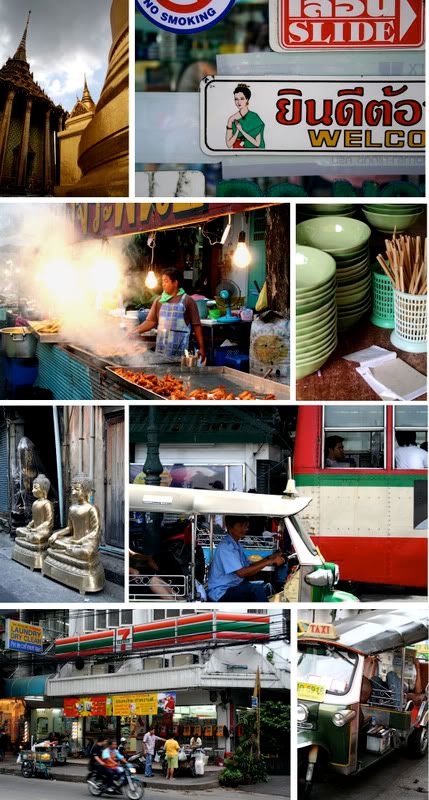
I held on the line, waiting for the woman at Greyhound’s call center to run my credit card numbers again. It was a bracing winter day in Johannesburg, the air lightly scented by the crisp woody smell of dry grass. As I waited to hear her voice, I distractedly scanned the nearly empty parking lot of the suburban condo complex. Like most residential spaces in Johannesburg, this community was gated, with a fortress-like barricade of burnt-ochre bricks surrounding it.
A heavy sigh on the line announced that she was back. “No, I’m sorry sir,” she said. “For some reason your credit card isn’t going through.”
I had been hoping to leave for Zimbabwe the next day, but nothing was working out as I had hoped. The earliest that a seat was available was on the following day, and now for some reason neither of my credit cards were working. “Well, can I pay in person somewhere?”
“Of course. You can come down to the ticket office at Park Station, but you must do it by tomorrow at 4 pm if you want this seat.”
I cringed. Park Station was in downtown Johannesburg. I was already nervous about going there- and now I’d have to do it two days in a row? “Can’t I just pay for the ticket when I come to board the bus?”
“Well, you can try to get a ticket then, but we can’t hold this one for you for that long. And I can almost guarantee that the bus will be full by then.” She seemed tired of dealing with me. “If I were you, I’d get downtown tomorrow.”
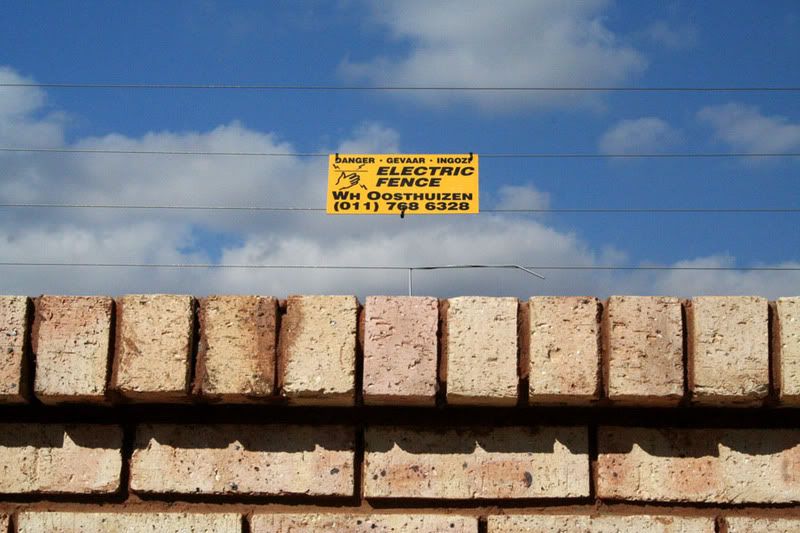
Few places terrify the suburban South African imagination as much as downtown Johannesburg. Though it had once been a lively grid of shopping streets and high-rise offices, many people now envisioned it as the epicenter of South Africa’s crime and violence. I was staying in Johannesburg with my friend Marc, and over dinner I told him of my plans. He was leaving early the next morning for a work trip, and wouldn’t be able to take me.
“Not that I’d go there with you if I could.” He shook his head. “First of all, I can’t believe you’re going to Zimbabwe. That place is a war zone.” Marc was prone to exaggeration, and a font of South African horror stories. “But you’re going to downtown Joburg? Man, you want to get killed. The people there are dangerous.”
Early the next morning, Marc dropped me at a guesthouse near central Johannesburg, and wished me luck. After checking into my room, I prepared for the trip downtown. I separated out some cash, took one credit card but left the other. Though I took people’s warnings about downtown Johannesburg with a measure of skepticism, in the back of my mind I kept the possibility that I was going to get mugged.
The day was starting to warm a little when I set out, the expansive blue of the sky not marred by even a single cloud. I walked to where I expected the bus stop to be, but once there, realized I had no idea which bus to take. Which direction was I going? I sat down to wait. After twenty minutes, I gave up. I wasn’t even sure if the bus I wanted stopped here. As I walked back toward my guesthouse, unsure of how to proceed, I saw the crowd of people waiting at the minibus taxi rank.
In Cape Town, I used minibus taxis all the time. To me, they seemed an ingenious system. The public bus network in Cape Town was terrible, so privately-owned minibus taxis plied the streets, an attendant shouting out their destinations and ushering passengers in. However, even in laid-back Cape Town, people gasped when they heard that I took the minibus taxis. To many white South Africans, they were little more than moving, metal coffins, associated with reckless drivers and fatal muggings. And this one would be going to downtown Johannesburg. I could imagine Marc’s reaction. “You’re taking a minibus- in Joburg?” But, as I saw it, I had no other choice.

I climbed into the first minibus that slowed to a stop, and ducked into a seat in the back. The attendant slammed the door shut, and we raced on. We zipped down the suburban expressway, through scratching tree branches and golden lawns. We stopped for more passengers: a young man in a corduroy blazer, and two round women in wool sweaters. We started up again, the women barely given time to squeeze in through the door before it was slammed shut. We curved through a neighborhood of quiet warehouses and factories, slid under a bridge, and suddenly arrived in downtown Joburg.
I had heard that all business had fled, leaving downtown Johannesburg deserted. From the ground, you’d never be able to tell. The sidewalks were packed to the point of over-spilling. Fast food outlets were doing a bust trade, and throngs of people were browsing between among shops and merchant’s stands.
I had tried to brush up on downtown’s layout in my guidebook, but looking out the window of the minibus taxi, I felt completely lost. Nothing in this urban chaos matched up to the layout sketched in my mind. I considered my options, and came up with only one: I would have to ask for help. It would label me as an outsider, make me vulnerable, but I didn’t have any other ideas. I leaned in toward the passenger sitting next to me, “Sorry, but are we going to be stopping at Park Station?”
“We won’t be stopping there, but we’ll be passing by.” He was an older man in a checked sweater, and he briefly studied my worried brow. “I’ll let you know when to hop off,” he offered.
We cut through the city blocks, between heavy traffic and crosswalks flooded with people. As we passed a dusty lot contained by chain-link, my fellow passenger called out to the driver, and let me know I should get off here. I jumped out as the taxi slowed, and found myself at a busy intersection, with no sense of direction. I couldn’t see Park Station over the shop’s awnings, and the road was to crowded for me to think. Suddenly I felt a hand on my shoulder, and before I could react, I was pulled down an alleyway.
I turned to see the face of the young man in the corduroy jacket, who had been sitting in front of me in the minibus. “You’re going to Park Station?” he checked.
“Yeah…”
“Alright, come this way.” He lead me down the alleyway, where sunlight was blocked out by tarps shading vendor’s stands. Merchants sold books, purses, designer shoes; street stands turned out richly spiced food for seated patrons. We turned, and he pulled me through an inconspicuous doorway. I found myself in the grandly arched terminal of Park Station.
“So where are you going?” he asked.
“Well, I need to buy a bus ticket- I’m heading to Zimbabwe.”
He nodded, and led me through the chilly corridors of the station to the bus terminal. I expected him to leave me there, but he simply stood waiting as I purchased my ticket. Though he had helped me immensely, I guiltily contemplated why he was doing it. What was in it for him? If he were planning on mugging me, why would he have waited for me to buy a ticket first? Was he expecting me to pay him for helping me?
“Well, where are you going now?” he asked after I stepped away from the counter, my ticket to Zimbabwe in hand.
I told him that I needed to catch a bus back to my guesthouse, and he immediately indicated for me to follow him again. We walked out of Park Station, and through a narrow shopping arcade. As we walked, he told me about himself. He was a student in filmmaking, and he hoped eventually to work for television. He asked me about my plans to visit Zimbabwe, my studies, and how I liked life in Cape Town.
“Yeah, I wouldn’t mind living down there,” he reflected. “But I think I’ll need to stay here- first for studies, then for work.” He stopped, and looked around. We stood in a courtyard hemmed in by stately buildings, where several two-story buses waiting expectantly. “Well, here we are.”
As he shook my hand, I couldn’t help feel confused. Where was the con, the appeal for money?
He smiled again as he nodded goodbye, but suddenly paused as if remembering something.
“You’re coming back to catch the bus tomorrow?” I nodded. He glanced a look back over his shoulder toward Park Station. “You really need to be more careful, especially if you have your suitcase. There are dangerous people there.”
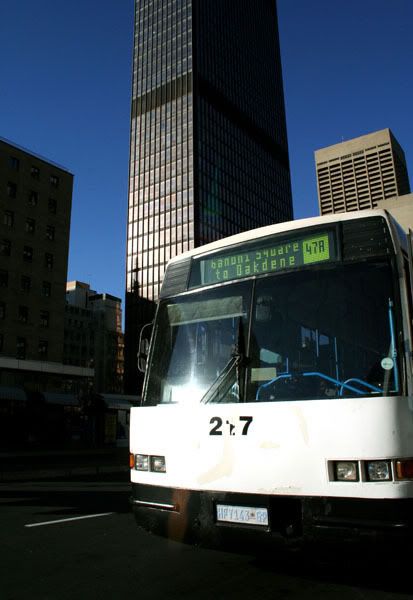
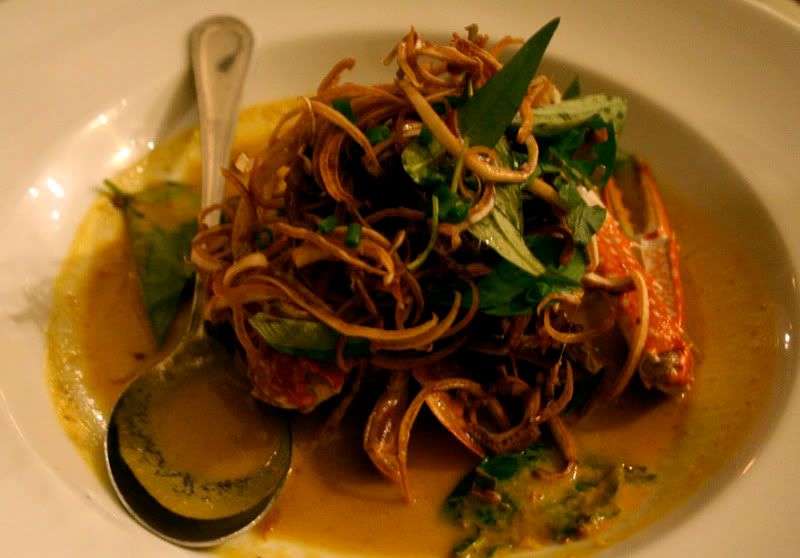 Since coming to Southeast Asia, I've been introduced to many new flavors and exciting dishes. As a result, the position of "favorite food" has gone through a lot of contenders. Massaman curry, haw mok, meang kham, dragonfruit, and squid with cashew nut have all held the top spot. My current favorite food is poo phat phong karii, yellow crab curry. It's an unbelievably tasty dish, and with its roots in Chinese cooking and Indian ingredients, it perfectly reflects Southeast Asia's diverse influences. Unlike most Thai curries, this dish uses curry powder- the result is a slightly lighter, though still rich dish.
Since coming to Southeast Asia, I've been introduced to many new flavors and exciting dishes. As a result, the position of "favorite food" has gone through a lot of contenders. Massaman curry, haw mok, meang kham, dragonfruit, and squid with cashew nut have all held the top spot. My current favorite food is poo phat phong karii, yellow crab curry. It's an unbelievably tasty dish, and with its roots in Chinese cooking and Indian ingredients, it perfectly reflects Southeast Asia's diverse influences. Unlike most Thai curries, this dish uses curry powder- the result is a slightly lighter, though still rich dish.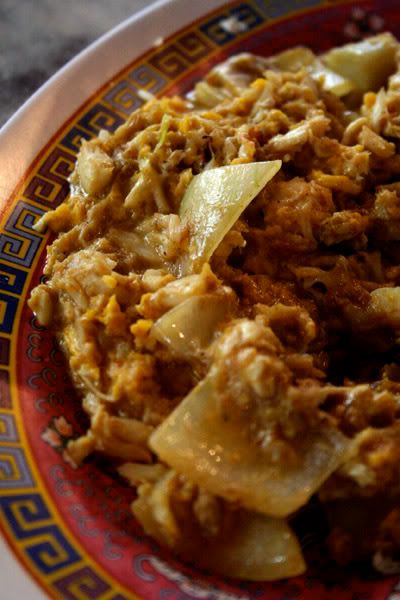
 Anyone else know where I can get a good dish of yellow crab curry?
Anyone else know where I can get a good dish of yellow crab curry?


